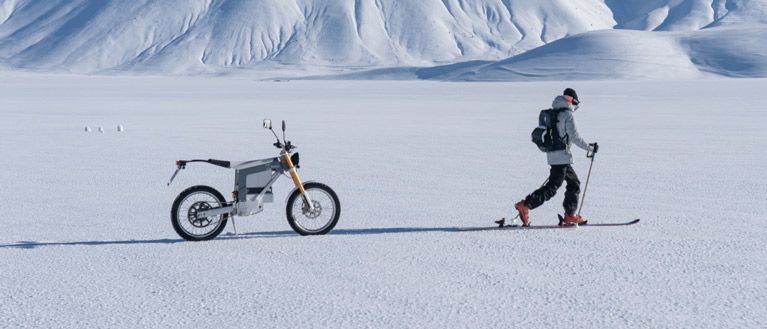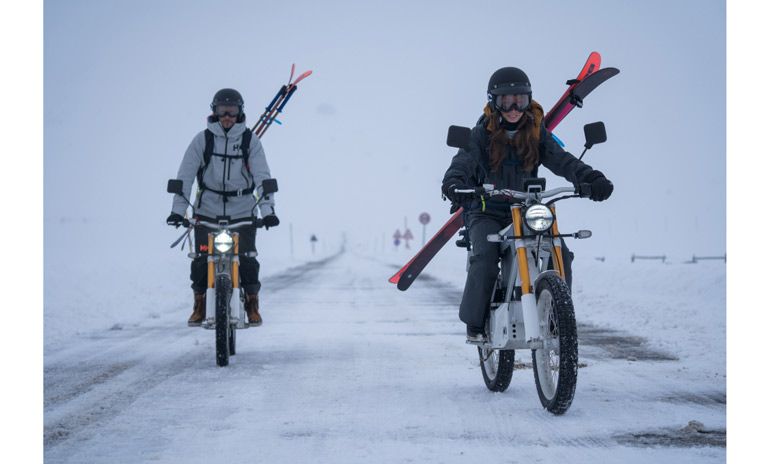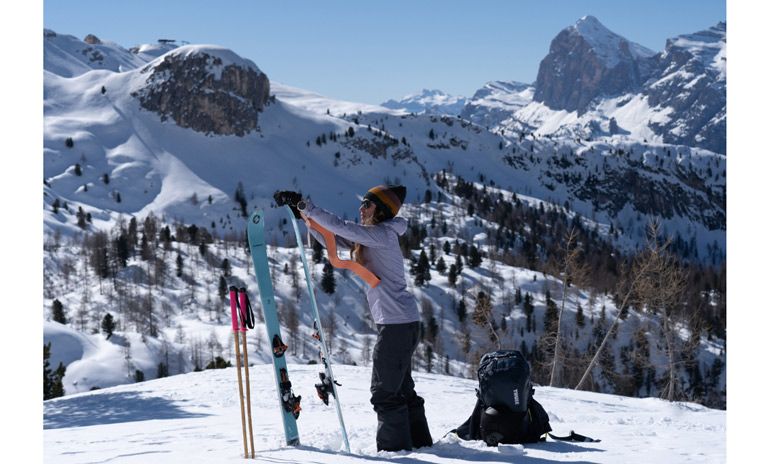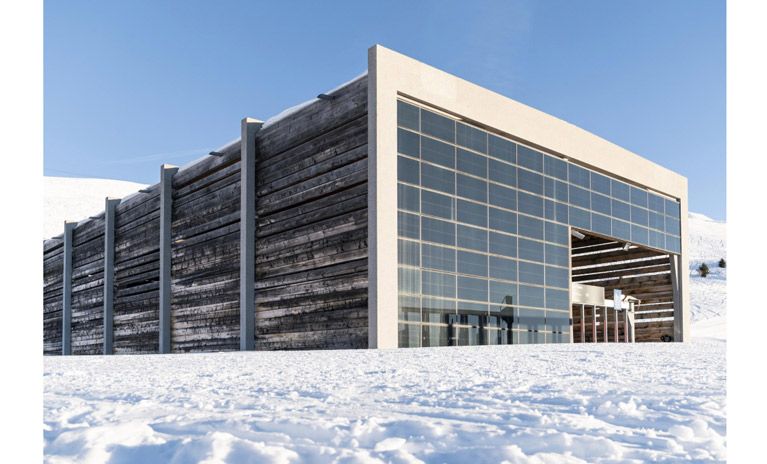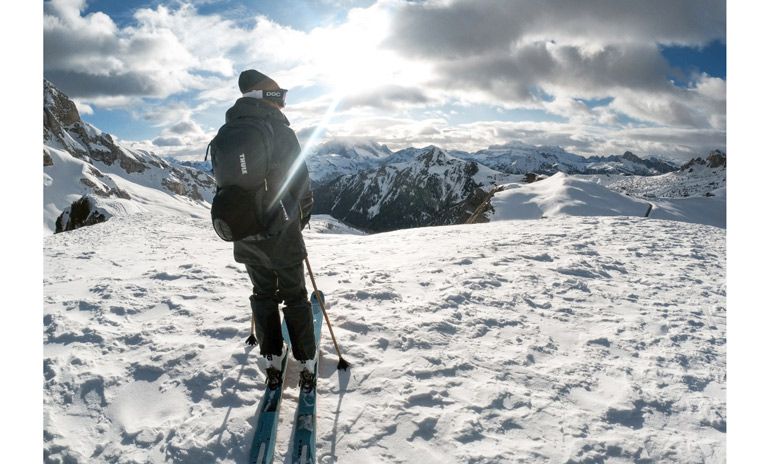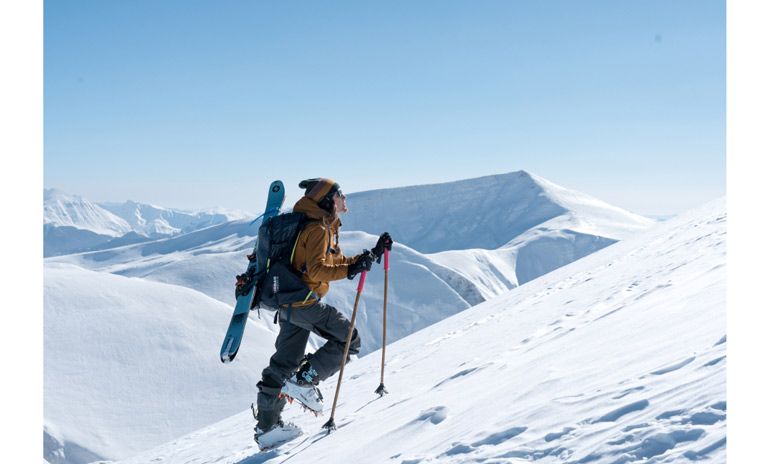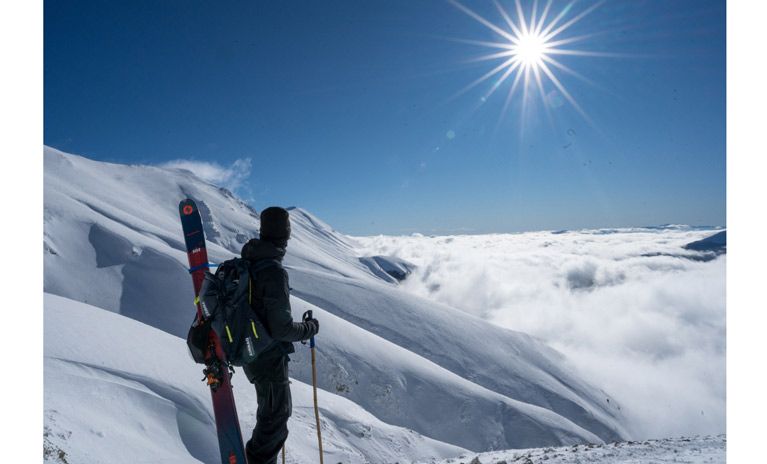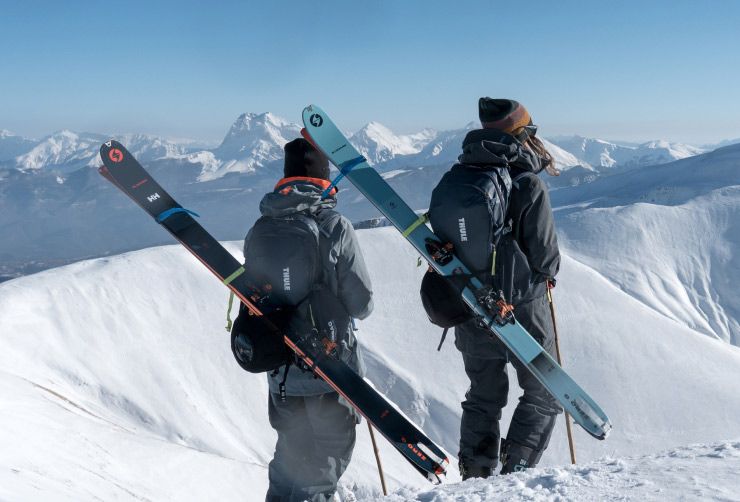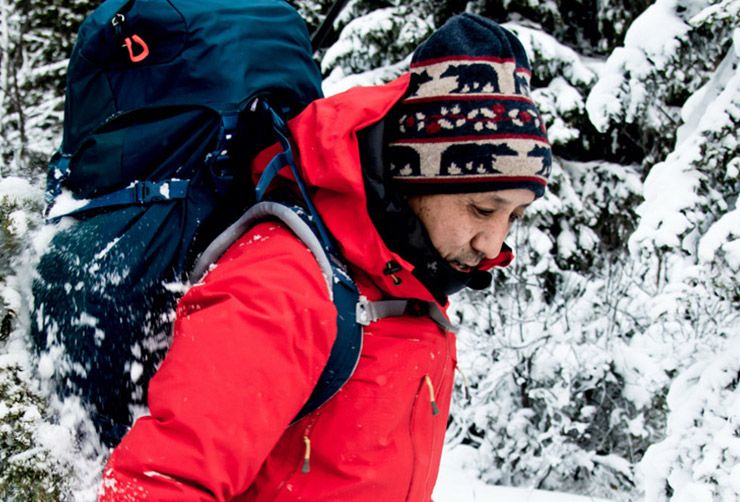Skiers Alice Linari and Lorenzo Alesi went on the most eco-friendly ski trip possible. Here are their biggest takeaways.
Lorenzo Alesi and Alice Linari are no strangers to the snow-capped mountains and glaciers of Europe. But these seasoned skiers and explorers put their passion to the test by traveling and skiing sustainably across half of Italy.
Their trip started at the southernmost glacier in Europe to the continent’s highest mountain, Mont Blanc. This journey is the subject of their new documentary, Melting Point, directed by Paolo Prosperi.
So how did they ski sustainably across Italy? Read their eco skiing tips below.
